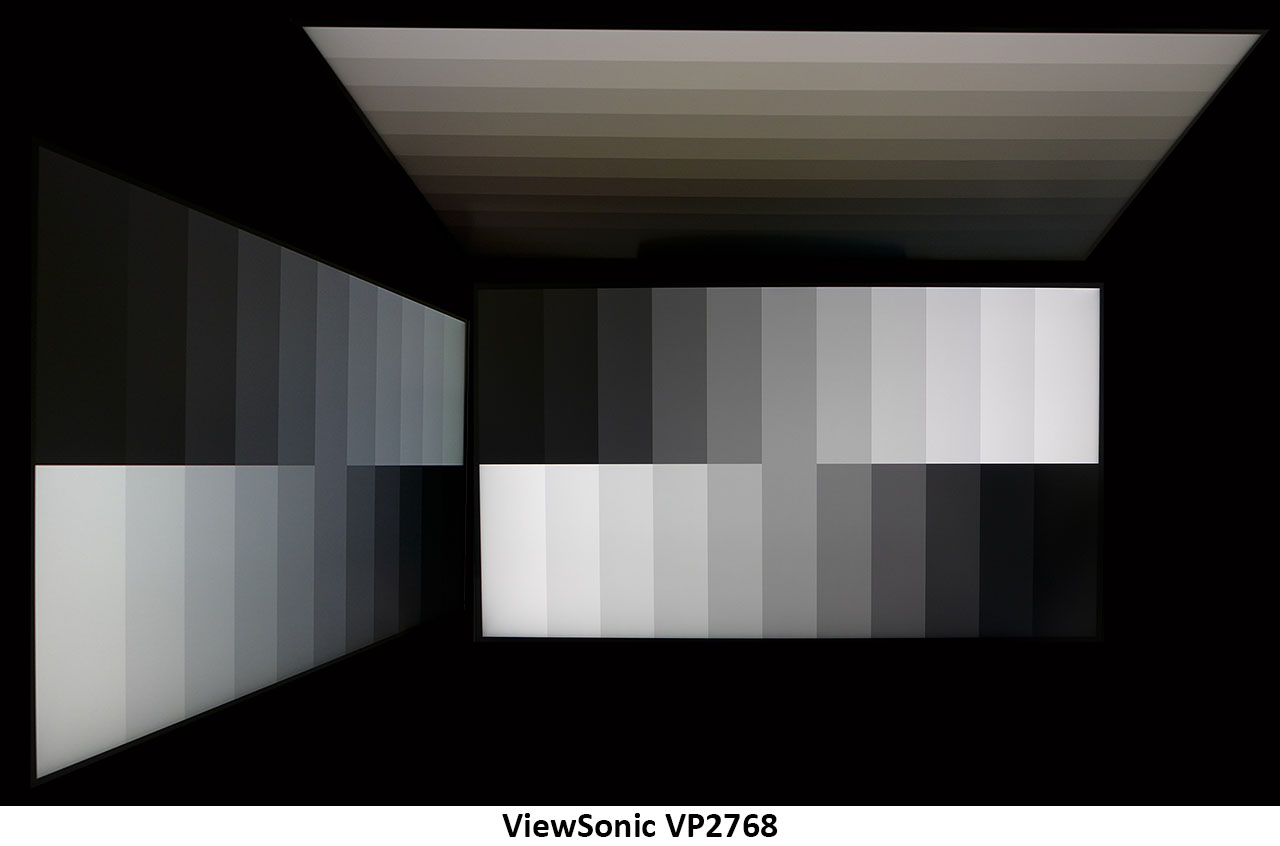ViewSonic VP2768 Professional Monitor Review
Why you can trust Tom's Hardware
Viewing Angles, Uniformity, Response & Lag
Viewing Angles
The VP2768’s off-axis image quality is typical for premium IPS panels with a slight blue shift and 40% brightness loss to the sides. Shadow detail holds up well until you pass the 45° point where the image becomes very poor, like any other LCD panel. From the top, detail is mostly washed out and the color shifts to a reddish-green.
Screen Uniformity
To learn how we measure screen uniformity, please click here.
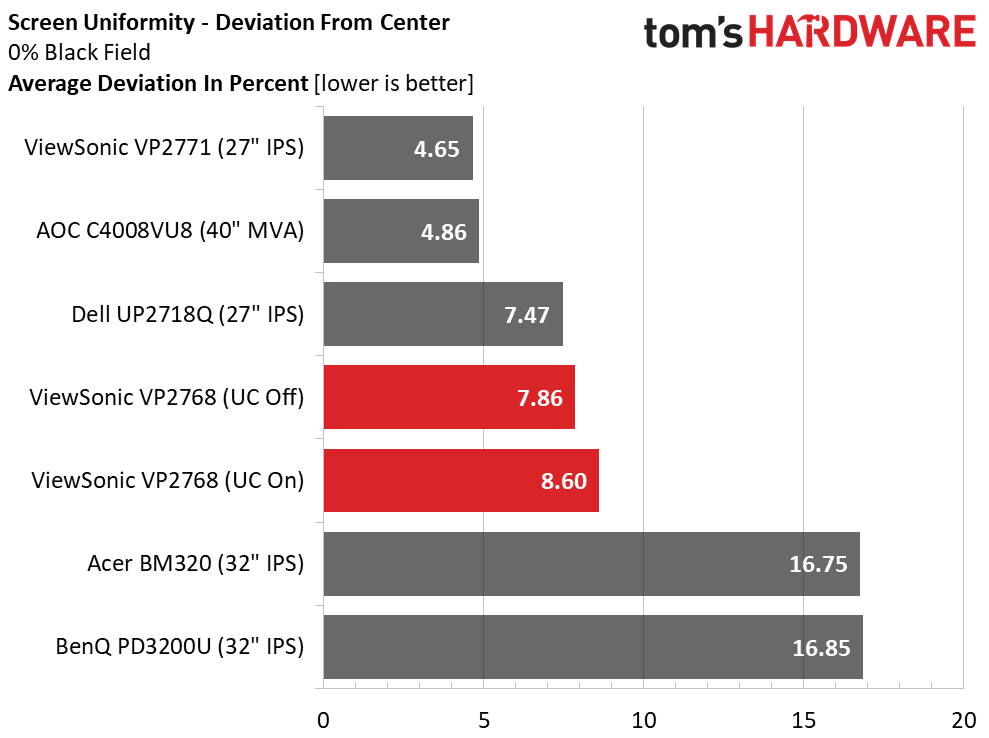
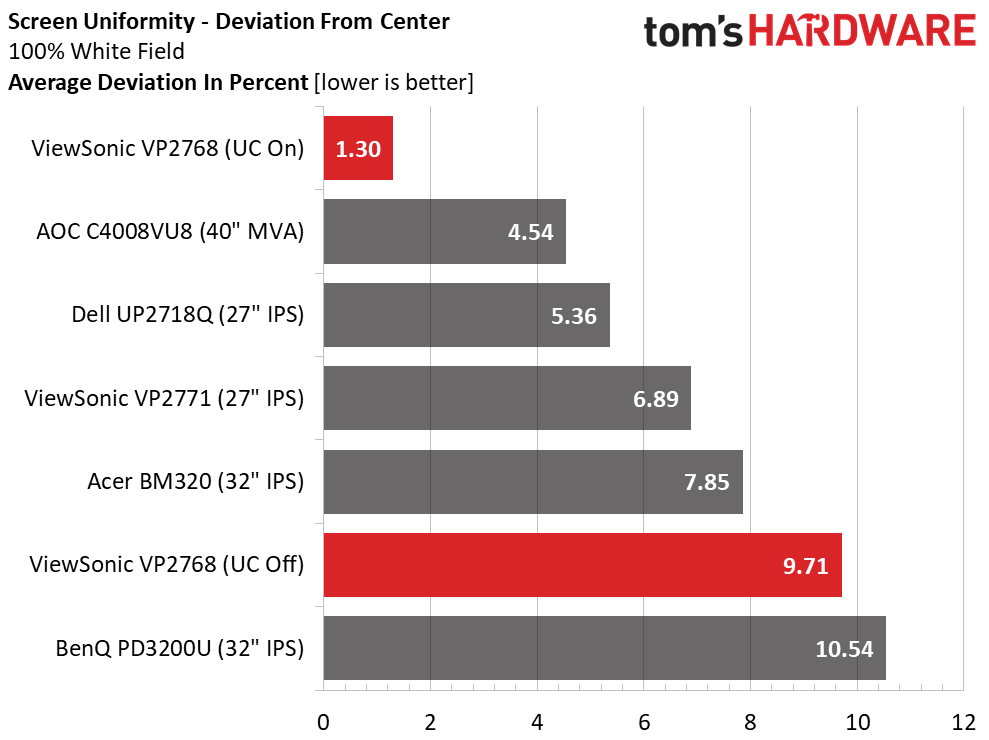
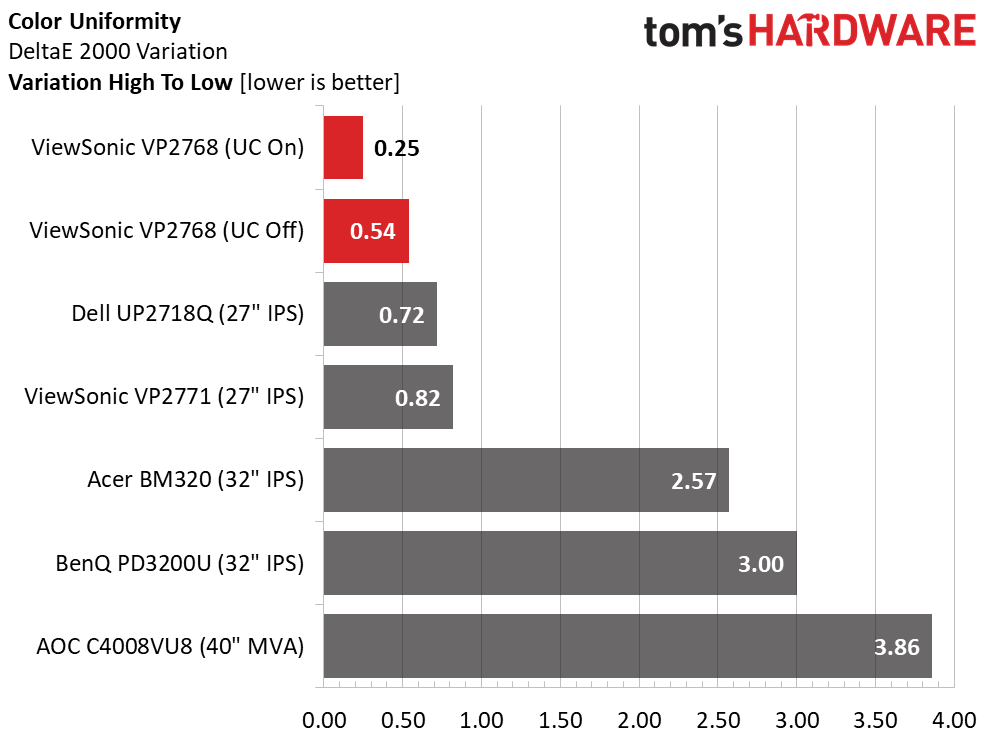
We measured the calibrated Custom mode for the compensation off tests and the fixed sRGB preset for compensation on. The black field was not improved by the feature, though at less than 10% we couldn’t see any evidence of glow or bleed. Remember that these results are sample specific. In the white field test, the difference was far greater. 9.71% is a decent score, but 1.30% is one of the best results we’ve ever measured. Equally impressive is the color uniformity test, which went from an amazing .54dE to a more-amazing .25dE with compensation. Clearly, our sample needs no help to look its best.
Pixel Response & Input Lag
Please click here to read up on our pixel response and input lag testing procedures.
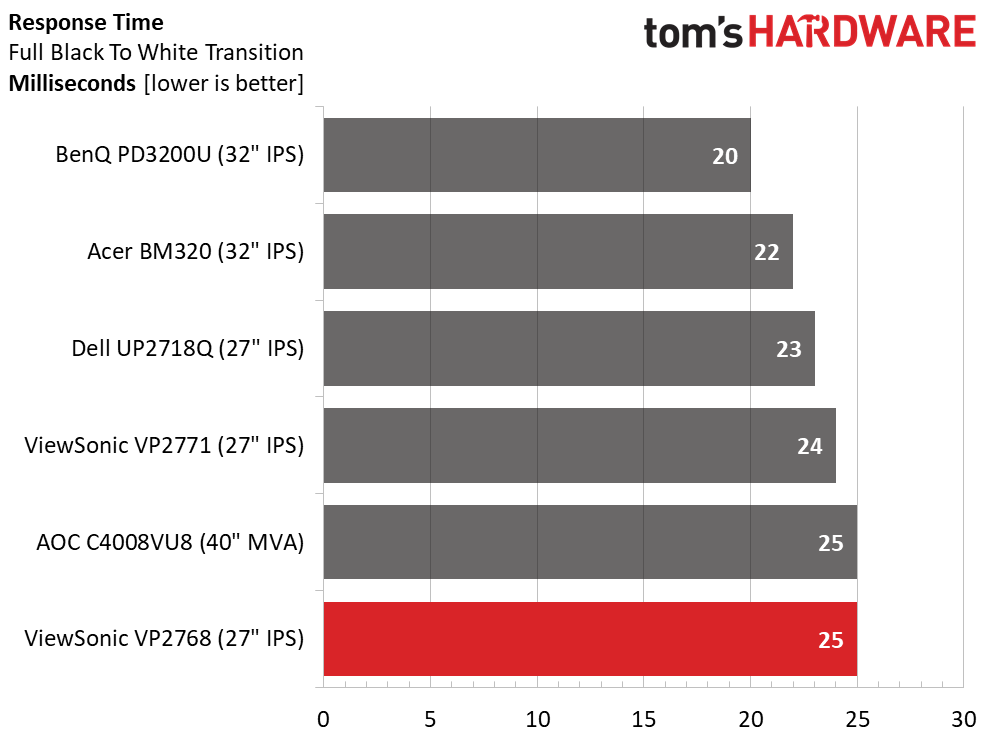
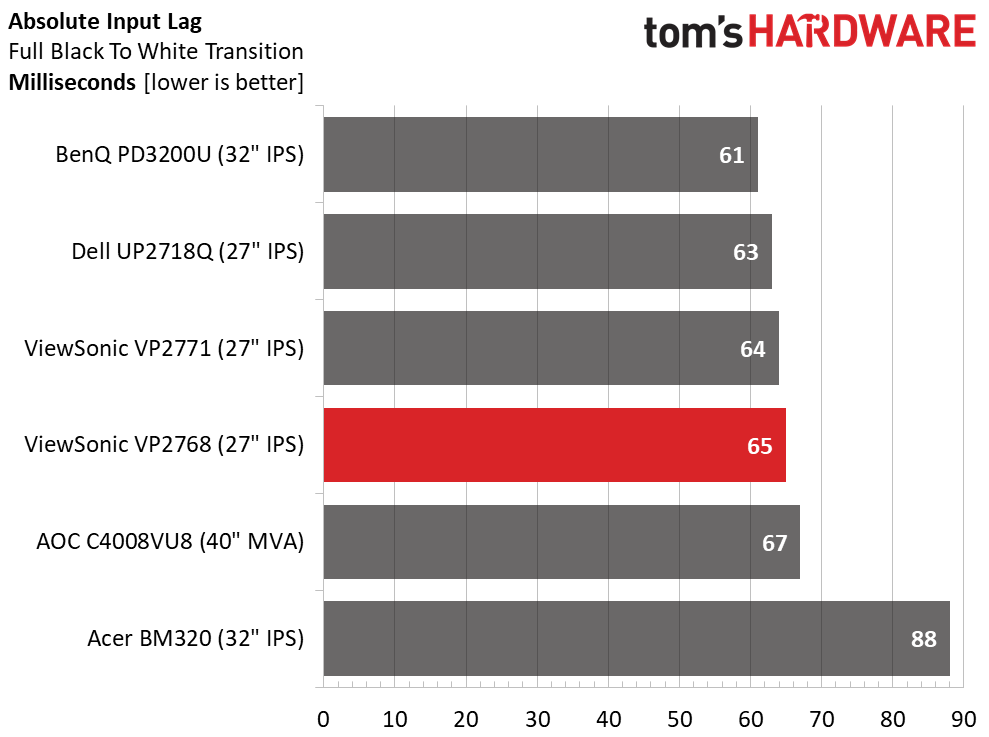
Gaming is far from the VP2768’s mandate but casual players will have no trouble enjoying a bit of fun with a relatively low 65ms of total input lag. A 25ms screen draw time is also typical for 60Hz IPS screens. The OSD has both overdrive and low input lag options, which have a positive effect on overall response. We didn’t see any significant artifacts when maxing both settings.
MORE: Best Gaming Monitors
MORE: Best Professional Monitors
Get Tom's Hardware's best news and in-depth reviews, straight to your inbox.
MORE: How We Test Monitors
MORE: How To Choose A Monitor
MORE: All Monitor Content
Current page: Viewing Angles, Uniformity, Response & Lag
Prev Page Grayscale, Gamma & Color Next Page Conclusion
Christian Eberle is a Contributing Editor for Tom's Hardware US. He's a veteran reviewer of A/V equipment, specializing in monitors. Christian began his obsession with tech when he built his first PC in 1991, a 286 running DOS 3.0 at a blazing 12MHz. In 2006, he undertook training from the Imaging Science Foundation in video calibration and testing and thus started a passion for precise imaging that persists to this day. He is also a professional musician with a degree from the New England Conservatory as a classical bassoonist which he used to good effect as a performer with the West Point Army Band from 1987 to 2013. He enjoys watching movies and listening to high-end audio in his custom-built home theater and can be seen riding trails near his home on a race-ready ICE VTX recumbent trike. Christian enjoys the endless summer in Florida where he lives with his wife and Chihuahua and plays with orchestras around the state.
-
Lutfij Another well written write up Chris! One question though, is the monitor VESA mount compatible? From the side shots and the rear, the monitor looks like it can be detached from the stand and subsequently mounted to an arm/wallmount.Reply
